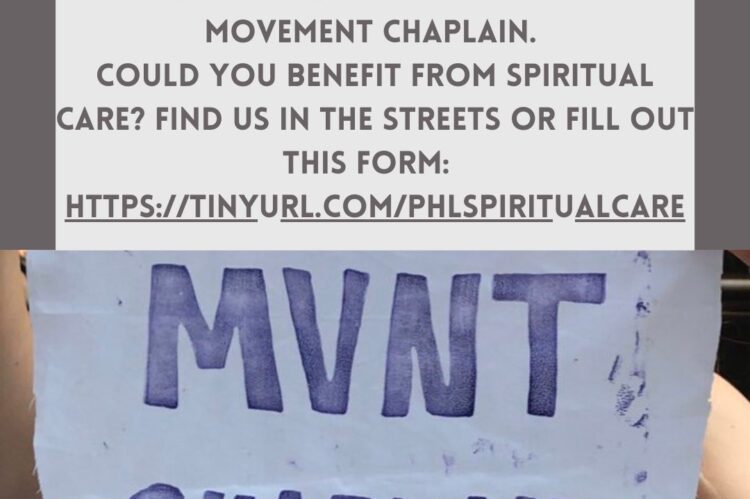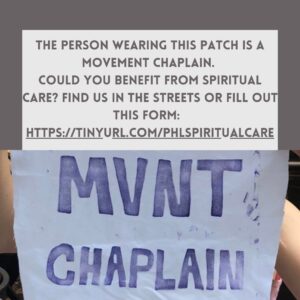The Lightbulb Moment

Photo by AbsolutVision on Unsplash
I was in the middle of a training session for new Executive Directors in the state of Oklahoma. We were all fresh on the job, within a year or so taking over at our respective organizations. The goal was for us to network, problem solve, listen, and grow together as a cohort taking our initial steps out into the world as nonprofit leaders.
I have to admit, I sort of zoned out for a bit, but when my attention returned to the conversation, the director of the Oklahoma Halfway House was discussing the weight and struggle her clients face as they navigate the world outside of incarceration. While in the heat of the discussion, she stopped to acknowledge that her staff struggles too, because of the heavy emotional toll suck work takes day in and day out. Without missing a beat, I asked whether or not her facility had a chaplain. Her eyes brightened as she said “no, but that is exactly what we need”.
Examining Chaplaincy
Revered institutions throughout our society recognize and lean on spiritual care as a discipline that assists individuals in need of whole person care. Our hospitals, military, prisons, and hospice facilities all utilize and value the contributions of spiritual care as a practice worthy of implementation within their structure.
Why is it, then, that so many of our nonprofit organizations that are working with the most at-risk communities do not also lean on this as a benefit to those they serve? It seems like a drastic gap that such a service goes without being utilized, and thus the idea of a Community Chaplaincy came to fruition.
It made too much sense, surely it existed somewhere in the U.S. already. However, although I found pockets of chaplaincy programs finding creative legs and walking forward in new and exciting ways, there was nothing quite like the fully collaborative organizational approach to serving a large swath of individuals who are already in contact with nonprofits in our area.
One new version of community-based chaplaincy I found in my research, was that of Movement Chaplaincy. This form of chaplaincy rose organically in the midst of a country that finds struggle and protest within recent years. “Movement Chaplains participate in social change ecosystems by providing accompaniment, care and resilience building with the goal of reducing activist burnout and creating more sustainable movements at all levels.”[1]
Another exciting development in the expansion of how chaplains are used is found in Smyrna, Georgia. The City of Smyrna, after seeing the effectiveness and gift of a chaplain’s presence in the city’s Fire and Police Departments, the City made the decision to hire a City Chaplain which would serve the entirety of the city’s employees and their families. It is not out of the realm of possibility for any entity to notice the gifts a chaplain gives, and expand its role so many can experience the gift of spiritual care.[2]
One of the most effective and exciting programs I was able to encounter was from 2010 in Glasgow, Scotland. This particular program partnered chaplaincy with the Department of Social Care within the city, in General Practitioners offices. The program was called Community Chaplain Listening (CCL), and was utilized by GP’s to refer patients to if they felt it would be a benefit. It was reported that those who participated in the program had “positive changes in patients’ behavior after the listening intervention, as well as fewer GP appointments and even reductions in prescribed medications”.[3] This study shows that access to spiritual care improved individual well-being when accessed as needed.
A New Way: Chaplaincy in the Margins
It is the idea that the community-based chaplain would be housed with the Oklahoma Conference of Churches, an organization that works with all denominations and faith traditions and takes a firm stance against discrimination. As an open organization when it comes to theology and religious practice, OCC would be a safe partner to initiate a chaplaincy program with secular organizations. However, even though it would fall under the mission and ministry of OCC, the chaplains would exist within the community, working through partnerships with local nonprofits to serve clients throughout the local community.

Photo by Dave Goudreau on Unsplash
Through partnerships with local nonprofits that serve at risk populations, the OCC would provide chaplains who would travel from location to location throughout the community to be available to provide spiritual care to those seeking its service.
It is highly important to remember that significant populations of people possess barriers to attendance in a formal faith community on a weekly basis in order to access spiritual care. If an individual is homeless, finding a church to attend is not at the top of a priority list when it comes to survival. If an individual is recently exiting the carceral system, the barriers are miles tall and endless, spiritual care may not be on the radar as they seek to rebuild their lives, but might make all the difference in the world to rebuilding a sense of self-worth.
There is also the notion of theological abuse which effects so many in the state of Oklahoma, most especially the LGBTQIA community. There are many community centers and services available throughout the state for this community, but very little access to spiritual care because of the distinct harm that has been done by religious communities in the past. OCC’s Community Based Chaplain could help rebuild from the trauma that has been caused for these individuals.

Courtesy of The Young Clergy Women’s Project International
No matter the circumstance, by having chaplains available within the community to come to people where they are already being served, whole person care can only increase. Chaplains’ presence brings a listening ear, an ability to rebuild self-worth that has been stolen from individuals, and a partner on a journey toward a reclaiming of personhood that few others could fully provide.
In conclusion, Chaplains belong in the community with ready access to any individual who needs care, and OCC and the Community Chaplain program would provide this service readily and with great sense of purpose and care.
[1] “Daring Compassion: The Role of Movement Chaplaincy in Social Change,” Faith Matters Network (blog), 2019, www.faithmattersnetwork.org/daringcompassion.
[2] Carolyn Cunningham, “Smyrna Forms City Chaplaincy Program,” February 27, 2020, https://www.ajc.com/news/local/smyrna-forms-city-chaplaincy-program/uDreipTHIV7i8TaHpZysoM/.
[3] H. Mowat, S. Bunniss, and E. Kelly, “Community Chaplaincy Listening: Working with General Practice to Support Patient Well-Being,” Scottish Journal of Healthcare Chaplaincy 15 (2012): 21–26.


I wholeheartedly agree with everything you said in this article. In my experience doing chaplaincy work for people in the justice field, individuals often are not aware of the toll the work is taking on them until it is quite extreme. One of my goals is to create systems of support for activists and people who have experienced police/military brutality. I have found that people often only get offered or seek out care immediately following a traumatic event when in reality the healing process is not linear and pain will likely surface at surprising moments. That is why I think an “in-house” chaplain is so important, we never know when we might need that support.